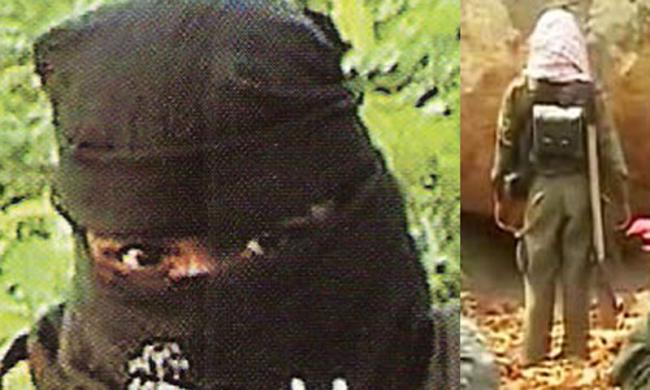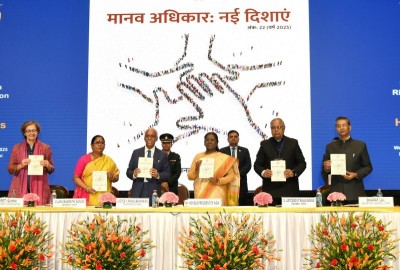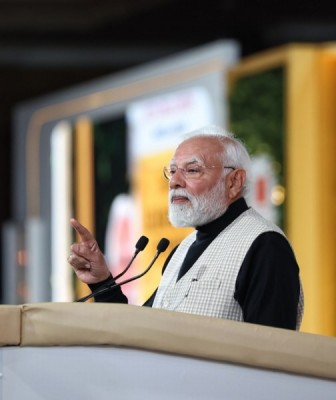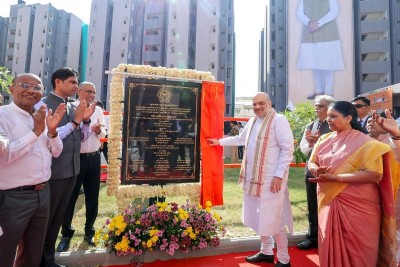
Maoists: No place to Hide
On July 19, 2018, at least eight cadres of the Communist Party of India-Maoist (CPI-Maoist), including three women, were killed after an encounter that ensued between the Maoists and the Security Forces (SFs) near Timinar and Pusnar villages in Bijapur District of Chhattisgarh. Sundarraj P., Deputy Inspector General (DIG) of Police (anti-Naxal operations, ANO), disclosed that the gun battle between the Maoists and the SFs took place while a joint team of the District Reserve Guard and Special Task Force were out on an anti-Maoist operation. During search subsequent to the encounter, along with the bodies of the Maoists, at least two INSAS (Indian Small Arms System) assault rifles, two .303 rifles, one 12 bore gun and a few muzzle loading guns were recovered from the encounter site. The identities of the slain Maoists are yet to be ascertained.
On July 6, 2018, three CPI-Maoist cadres were killed in an encounter with SFs in a forest area under Katekalyan Police Station limits in the Dantewada District of Chhattisgarh. A District Reserve Guard trooper was injured in the exchange of fire. The encounter took place when a joint team of the District Reserve Guard and the District Force was out on an anti-Maoist operation. The slain Maoists are yet to be identified.
On June 15, 2018, SFs killed three CPI-Maoist cadres during an encounter in the Chintagufa village area of Sukma District, Chhattisgarh. SFs recovered four weapons, including one rifle and a pistol, ten detonators, one bomb, codex wire, explosives, uniforms, backpacks and other material from the encounter spot. Two of the slain Maoists were identified as Renga, the ‘deputy commander’ of the CPI-Maoist Dornapal Local Operating Squad (LOS) and Vetti Deva. The identity of the third Maoist is yet to be ascertained.
On May 13, 2018, four CPI-Maoist cadres, including two women, were killed during an exchange of fire with the Police at Godanki village under Kandhamal Sadar Police Station limits in the Kandhamal District of Odisha. Police recovered eight weapons, including an AK-47 and an INSAS assault rifle, from the spot. The identities of the slain Maoists are yet to be ascertained.
April 27, 2018, eight CPI-Maoist cadres, including six women were killed in an encounter with teams fromGreyhounds, an elite anti-Naxal unit of the Telangana Police, along with Chhattisgarh Police's Special Task Force, as well as the District Reserve Guards and troopers from the Central Reserved Police Force (CRPF), in the deep jungles under Ilmidi Police Station limits in Bijapur District, Chhattisgarh. Police recovered one Self Loading Rifle (SLR), one .303 bore rifle, four .12 bore guns, one .315 bore gun, one revolver, live cartridges, three hand grenades, six Rocket Launchers, 10 bags, four pairs of olive green dresses and Maoist literature. The killed CPI-Maoist cadres, whose identities are yet to be ascertained, were active in the Usoor and Basaguda areas of Bijapur District.
These are not isolated incidents. Rather they reflect the growing consolidation of SFs against the Maoists. It is crucial to note here that SF personnel have achieved considerable successes against the Maoists across the country, particularly since the beginning of the current year. The recent incidents only carry forward past momentum.
According to the South Asia Terrorism Portal (SATP) database, at least 122 Maoists have been killed across India in 2018 (till June 30), in comparison to 82 Maoists, killed in the corresponding period of 2017. Incidentally, this is the highest number of fatalities among the Maoists recorded during the first six months of any year since 2011, when such fatalities stood at 154. Such fatalities remained within two digits between 2012 and 2015, and increased to 117 in 2016, only to fall again in 2017, to 82.
As reflected in the data, the SF:Maoist fatality ratio of 1:2.44 in the first six months of the current year, favouring SFs, bettered the SF:Maoist fatality ratio of 1:1.24 in the first six months of 2017. Since 2010, the SF:Maoist fatality ratio (for the first six months of each year) favoured the Maoists thrice(1.40:1 in 2010), (1.30:1 in 2012) and (1.16:1 in 2014), while the ratio favoured the SFs six times: 1:1.87 in 2011); 1:1.45 in 2013; 1:1.66 in 2015; 1:3.16 in 2016; 1:1.24 in 2017; and 1:2.44 in 2018. However, the strongest SF:Maoist fatality ratio in favour of SFs was 1:3.16 in 2016.
What is disturbing, however, is that civilian killings by the Maoists have seen a slight spike of 3.38 per cent in 2018 (first six months) as compared to the same period last year. The highest number of such fatalities during the first six months of a year was recorded in 2010, at 397.
In the meantime, at least 17 major incidents (each involving three or more fatalities) have been recorded in 2018 (till June 30) in which three civilians, 28 SF personnel and 86 Maoists have been killed; as against 11 major incidents in which three civilians, 51 SF personnel and 29 Maoists were killed in the first six months of 2017. The number of major incidents in 2016 was 18; in 2015, seven; in 2014, 15; in 2013, 17; in 2012, 12; in 2011, 28; and in 2010, 27 in the first six months of each of these years.
Out of the 17 major incidents recorded in 2018, the Maoists were at the losing end in at least 12, with 86 cadres killed. Significantly, there were two incidents in which more than 10 Maoist cadres were eliminated. At least 40 Maoists were killed in the Gadchiroli District of Maharashtra in twin encounters on April 22-23, 2018; and at least 10 Maoists, including six women, and one trooper were killed in an encounter near Pujarikanker in Bijapur District on March 1, 2018.
According to a July 3, 2018, report CPI-Maoist documents recovered by the Police reveal that the Maoists have conceded their failure in targeting SFs and mobilising militia. The documents, which are apparently the proceedings of meetings of ‘sub-zonal or zonal level committees’ of the CPI-Maoist, stated,
We have failed in hitting the target of Tactical Counter-Offensive Campaign (TCOC) in four commands. Two companies took some effort. But, due to small technical mistakes and error of judgement at the level of ‘commanders’, we have lost good opportunities.
According to the report, the documents also revealed that the Maoists have attributed the failure in carrying out their ‘annual TCOC’ to a variety of reasons other than “technical mistakes and error of judgment at the level of ‘commanders’.” These include, failure in mobilising militia’ (fighting force in forest areas), problems with ‘gathering of Intelligence’ on Police movement, insubordination within party units, among others. In one of the recovered documents, instances of junior-level Maoist cadres refusing to obey the orders of seniors have been mentioned. From the documents, it is evident that the senior-level Maoists are worried about cadres refusing to do sentry duties. In some cases, when the senior Maoists scolded the juniors, they preferred not to communicate with each other, resulting in lack of co-ordination within units while moving through the jungles and avoiding face-offs with the SFs. One of the CPI-Maoist documents mentioned, “all the single-target actions this year under TCOC have failed completely,” with increased visibility and mobility of Police forces especially in Gadchiroli District. The leadership expressed worries about their own operations.
Significantly, in April 2018, the Ministry of Home Affairs indicated that just 106 districts in 10 States were categorize as ‘Left Wing Extremism affected’, and continued to be covered under the Ministry’s Security Related Expenditure Scheme (SRE) for the purpose of reimbursement of security related expenditure. Out of these 106 districts, 35 accounted for 80 to 90 per cent of country-wide LWE violence, and were categorized as ‘Most Affected’. The Ministry also noted that, over the last few years, a number of districts had been carved into smaller districts, as a result of which the geographical area of the 106 SRE Districts was redistributed over 126 Districts; and that of the 35 ‘most affected Districts’ expanded to 36 Districts.
Moreover, the MHA claimed, over the preceding four years there has been a substantial improvement in the LWE scenario. Incidents of violence recorded a 20 per cent decline, with a 34 per cent reduction in related deaths in 2017, as compared to 2013. The geographical spread of LWE violence also shrunk from 76 districts in 2013 to 58 in 2017. Besides, just 30 of these Districts account for 90 per cent of LWE violence in the country. MHA also undertook a “comprehensive exercise in consultation with the States to review the affected Districts in order to ensure that the deployment of resources is in sync with the changed ground reality.” As a result, 44 districts were excluded and eight new Districts were added to the list of SRE Districts: The MHA statement added,
In order to counter Maoist efforts to expand their influence in the tribal areas at the tri-junction of Kerala, Karnataka and Tamil Nadu, three Districts of Kerala have been included in the list of SRE Districts. Despite the fact that there is hardly any violence in the new Districts, the move is pre-emptive. As a result of the exercise, 90 districts in 11 States will now be covered by the Scheme, down from 126. The list of ‘Most Affected Districts’ has been pruned to 30, down from 36. The revised categorization is a more realistic representation of the actual LWE scenario.
The Maoists are facing a challenging time across all theatres of their conflict in India, and the pressure on them in their ‘last bastion’ – Chhattisgarh – is also building rapidly. The SF campaigns against the Maoists need to be sustained, even as SF capacities and intelligence flows are augmented, to leave the Maoists with no place to hide.
Support Our Journalism
We cannot do without you.. your contribution supports unbiased journalism
IBNS is not driven by any ism- not wokeism, not racism, not skewed secularism, not hyper right-wing or left liberal ideals, nor by any hardline religious beliefs or hyper nationalism. We want to serve you good old objective news, as they are. We do not judge or preach. We let people decide for themselves. We only try to present factual and well-sourced news.







